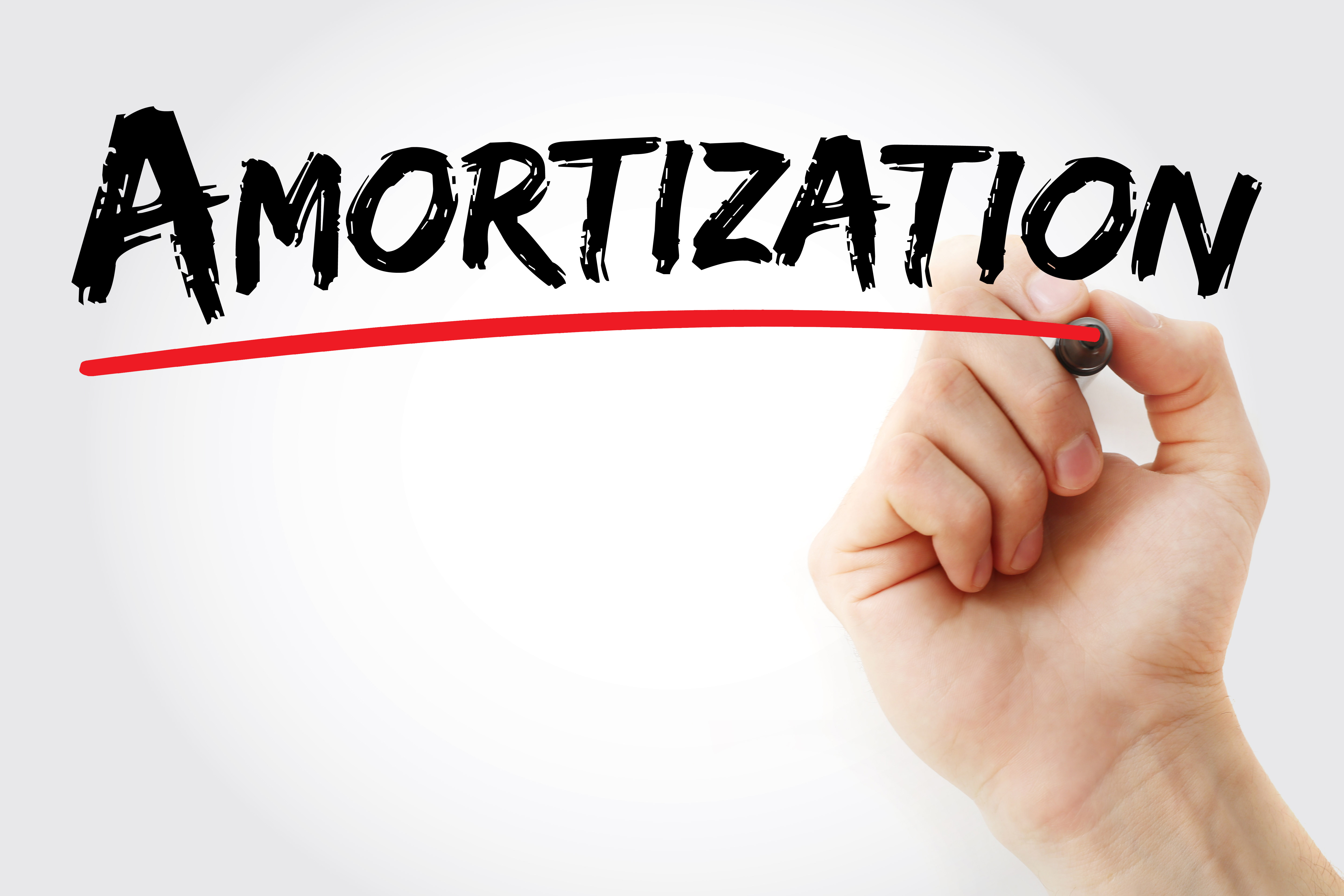
Preparing for your real estate exam involves looking at a number of concepts that are likely to be on your exam. Financing is one such topic that is worth directing some of your time to. The DRE says that 9 percent of the exam covers financing and a financing concept that is commonly tested is “amortization”.
Amortization of a loan refers to the process of paying off a debt with regular and fixed payments over a specified period of time. Each payment includes a portion allocated to both principal and interest.
Principal is the amount of each payment that actually goes to reducing the amount owed. Interest is the fee that is charged for borrowing the money.
The word "amortization" comes from an Old French word "amortir," which means "to kill" or "to deaden." This is rooted in medieval times and idea was that each payment would "kill off" a portion of the debt, reducing it gradually until it was fully paid off.
The modern financial meaning of the term, which refers to the gradual repayment of a loan through regular payments that include both principal and interest, evolved from this earlier usage.
Example: You borrow $800,000 to buy a house and pay off the loan over the 30 year term. At the end of the 30 years, the loan has been “fully amortized”.
In simple terms, amortization breaks the loan into smaller and more manageable payments over a set period. As an example, in the case of a car loan the time to “fully amortize” or “kill” the loan is typically 4-7 years. In the case of a home mortgage, the loan term is usually either 15 or 30 years.
Every loan has an amortization schedule which outlines the amount of the payment and shows the portion of each payment that goes towards paying off the principal and interest.

Because amortization “kills” the loan, each payment made during the amortization period reduces the outstanding balance of the loan by some amount. In the early part of the payment schedule, most of the payment goes towards interest, but as the loan progresses, more of the payment goes towards reducing the principal.
Over time, the amount of interest paid decreases, while the amount of principal paid increases. At the end of the loan term, the full amount borrowed is “amortized”, and the borrower owns the property outright.
Not all loans are full amortized. For example, there is another type of loan known as a straight note or interest-only loan. In this arrangement, the borrower makes interest-only payments and none of the payment goes to actually reduce the principal balance.
Straight notes may be used in certain situations, such as when a borrower expects to have a large amount of cash available at a future date to pay off the principal balance, or when a borrower needs lower monthly payments in order to afford the property.
However, straight notes can be risky for borrowers because they may result in higher overall interest costs, larger future payments, and potentially owing more on the loan than the value of the property. As a result, straight notes are generally less common than fully amortized loans in the mortgage industry.
So which loan is better?
Whether a fully amortized loan or a straight note is better depends on the specific circumstances of the borrower and their financial goals.
A key benefit to the fully amortized product is that it results in the loan being completely paid off at the end of the loan term. This type of loan provides predictability and stability in terms of payment amounts and a clear path toward paying off the debt.
As mentioned earlier, a straight note requires the borrower to pay only interest on the loan for a set period of time. This type of loan can result in lower monthly payments and may be beneficial for borrowers who need more flexibility in their monthly budget. However, because the principal balance is not being paid down during the interest-only period, the borrower will need to make larger payments or refinance the loan to pay off the principal at the end of the interest-only period.
In general, a fully amortized loan may be a better choice for borrowers who want to build equity in their property and pay off the debt over a set period of time, while a straight note may be a better choice for borrowers who need lower monthly payments in the short term but are willing to take on the risk of potentially higher payments in the future. Ultimately, borrowers should carefully consider their financial goals and the terms of each loan option before making a decision.
There is another type of even riskier loan product common before the financial crisis of 2008 is known as negative amortization. It’s called negative amortization because instead of the loan balance going down, in negative amortization the loan balance actually goes up.
The reason the balance rises in negative amortization is because the payments are not sufficient to cover the interest owed on the loan, resulting in the interest being added to the principal balance. This means that the borrower's loan balance actually increases over time rather than decreasing as it would with a fully amortized loan.
Negative amortization typically occurs with certain types of loans that have adjustable interest rates, such as option adjustable-rate mortgages (ARMs), or payment option loans. These loans offer a low initial payment, often resulting in a payment that is less than the interest that is accruing on the loan, causing the unpaid interest to be added to the loan balance.
Although the payment on a negative amortization loan is much lower compared to even a straight-note, this type of loan has several horrific consequences for borrowers, including increased interest costs over the life of the loan, larger payments in the future, and potentially owing more on the loan than the original amount borrowed. Therefore, borrowers should carefully consider the terms of their loan and ensure that they can afford the payment amount both currently and in the future.
Because of all these risks associated with the negative amortization product, when Arnold Schwarzenegger was governor, California passed legislation actually banning new negative amortization loans.
Federally the Truth in Lending Act (TILA) requires lenders to disclose the terms of a loan, including the payment schedule, interest rate, and total cost of the loan over its term. Additionally, the Dodd-Frank Wall Street Reform and Consumer Protection Act of 2010 includes provisions that require lenders to evaluate a borrower's ability to repay the loan, which has led to tighter regulations on certain types of loans, including those with negative amortization.
If you are reading this article and want practice questions related to real estate finance to prepare you for your real estate exam, I’d recommend checking out our exam prep website for tons of practice questions and updated content.
At the end of the day, fully amortized loans can offer several benefits for borrowers, including:
Predictable payments: With a fully amortized loan, the borrower knows exactly how much they will need to pay each month and over the life of the loan. With an interest only loan, on the other hand, there may be a balloon payment at the end of the loan or a variable rate after some fixed period. Full amortized loans can make budgeting and financial planning easier and more predictable.
Reduced interest costs: By design, fully amortized loans are created so that the borrower pays off the loan balance over a set period of time. Because of this borrowers will typically pay less in interest costs over the life of the loan compared to other types of loans, such as interest-only or balloon loans.
Equity buildup: As time goes on and the borrower makes payments on a fully amortized loan, the loan balance gradually decreases, resulting in an increase in equity in the property. Combine this with expected appreciation of the home and equity can start to build quickly- no doubt an important factor for homeowners who plan to sell the property in the future or use it as collateral for another loan.
Lower financial risk: Fully amortized loans offer a lower level of financial risk for owners because the loan balance is gradually paid down over time, reducing the risk of owing more on the loan than the property is worth.
Potential tax benefits: In some cases, the interest paid on a fully amortized loan may be tax-deductible, which can result in additional savings for the borrower.
Overall, fully amortized loans offer borrowers a stable and predictable path towards paying off their debt, with lower overall interest costs and reduced financial risk. Much of the real estate industry (and society at large) learned their lesson in 2008 when borrowers got risky adjustable rate and interest only loans in the few years prior.
As always if you are interested in taking real estate classes with our school and for in-depth instruction to help you pass the real estate exam visit www.adhischools.com.
Love,
Kartik
California Real Estate License Delays: How to Pass DRE Education Verification Fast
Holiday Home Sales: A Hidden Opportunity for Agents
What Happens When the DRE Denies Your License (and How to Fight Back)
Out-of-State Agents: Transferring a Real Estate License to California
Understanding DRE Form RE 226: How to Verify Your Experience for a California Broker’s License

Founder, Adhi Schools
Kartik Subramaniam is the Founder and CEO of ADHI Real Estate Schools, a leader in real estate education throughout California. Holding a degree from Cal Poly University, Subramaniam brings a wealth of experience in real estate sales, property management, and investment transactions. He is the author of nine books on real estate and countless real estate articles. With a track record of successfully completing hundreds of real estate transactions, he has equipped countless professionals to thrive in the industry.